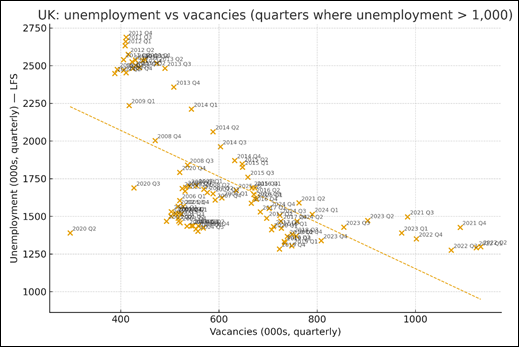B811 – Tutorial
1 – Human Resource Management in Context
Internal (Pricing)
Decisions vs External (Supply Chain) Factors
Introducing the term: VUCA
Something very interesting has come up in the tutorial
slides from Week 0 of B811. The term VUCA has emerged and is being used
broadly to describe external influences on the functioning of the organisation, which translate as volatile, uncertain, complex or ambiguous (VUCA) influences.
Phonetically, it may sound like a slightly graphic cross-reference to an insult
and movie title where Ben Stiller was cast, but in fact, VUCA is anything
but in nature, as we will come to see it is a reasonably productive abbreviation.
One that may very well dictate the analysis of (external) threats in a corporate
SWOT matrix.
PESTLE and STEEPLE
In Tutorial 1, the introduction to our
module, we’re given the example of a high-fashion store offering clothes for
sale that use fabrics sourced from ethical suppliers. Let’s refer to this store’s
business as Firm X. We’re asked to critically analyse a situation where business
pressures create the need to evaluate whether disbanding the value of its ethical
brands, which would be categorised as being under the STEEPLE factor – which is
just PESTLE with an ethical dimension – could save Firm X enough by way of its manufacturing,
and production process to yield a greater level of profit.
Where do we start with this? My approach is
basically to look at two aspects of the scenario and by extension, two further
aspects which may inform our thinking on strategic decision making.
- Look at: Ethical constraints and the possible depreciation of brand
value (Internal)
- Look at: Strategic matters concerning business decision-making (Internal)
- Observe: Market
size for ethical brands in fashion (External)
- Observe: Price elasticity
in ethical consumption (External)
What dynamics are at play here? Well, aside
from the obvious theories that may apply (that of Ronald Coarse's theory of the firm and Milton Friedman's imperative on Firm X as a profit-seeking entity)
if we focus solely on the latter two aspects of our second approach, we find various
factors may come to fruition, namely, a hypothetical dichotomy arising from the
timely distinction between import restrictions (relevant for US based
emporiums) and logistics and supply chain synergies from the procurement of domestic
ethical fabric brands.
By extension, local currency valuations
also become a factor of relevance. How do foreign exchange rates for overseas
ethical brands compare to procurement from domestic brands that offer similar
value?
Approaching the topic like this essentially
narrows the issue of effective pricing decisions to the influence of supply chain
factors. How does Firm X address this practical assumption? One way is by
looking at evidence-based models of price elasticity using a package such as R,
where Marshallian (uncompensated) price elasticities and Hicksian
(compensated) price elasticities can be estimated. Assuming a price vector that combines a dataframe reflecting sale prices and quantities.
Q: Can you think of any scenarios where
there may be a conflict or tension between volatility and regulation affecting
Firm X?
This is a great warmup question to get the
loins gurgling. Not only is the topic of volatility a matter for globalisation, but it is also a matter for regulation. Take, for instance, the example of Credit
Suisse Group and its case as a defendant in a trial where the Group and its then Chief Executive Thiam Tidjane were wrongly accused of manipulating a key market volatility
benchmark (the inverse VIX). The V in VUCA also reminded me of what the Canadian environmental
activist and writer, Naomi Klein, eloquently refers to as ‘Beyond Borders’ in a
2001 conference speech come New Left Review article entitled: ‘Reclaiming the Commons’.
I am reminded at this juncture of Prof. Alan Barrell’s use of the same
language in his presentations on ‘Entrepreneurship Without Borders’.
Q: Any crossover between external factors
affecting Firm X and internal factors?
- External: PESTLE - environment (COVID-19’s HR response given treatment of racial discrimination in frontline occupations in England and Wales).
- Internal: Strategic changes/Managerialism (Al Mahameed, Yates, & Gebreiter, 2024)
- Africa and Nigeria – where studies focused on the link between 1)
trade union survival strategies, 2) the new employment relations climate, and 3)
the subject of globalisation (Betchoo, 2013)
References
Al
Mahameed, M., Yates, D., and Gebreiter, F. (2024). Management as Ideology: “New”
Managerialism and the Corporate University in the period of Covid‐19. Financial
Accountability and Management, 40(1),
34-57 (Accessed on 04 May 2025)
Betchoo,
N. K. (2023) ‘Youth empowerment as a human resource development strategy in
Mauritius’, Issues in Business Management and Economics, 1(8), pp.
218-229. Available at: https://journalissues.org/ibme/abstract/betchoo/
(Accessed on 04 May 2025)
Holbrook,
P. and Beadle, H. (2025) ‘B811 - Human Resource Management in Context Tutorial
1 - introduction’, Open University Business School (Accessed on 03 May
2025)
Klein,
N. (2001) ‘Reclaiming the Commons’, New Left Review, Available at: https://newleftreview-org.libezproxy.open.ac.uk/issues/ii9/articles/naomi-klein-reclaiming-the-commons
(Accessed on 04 May 2025)

